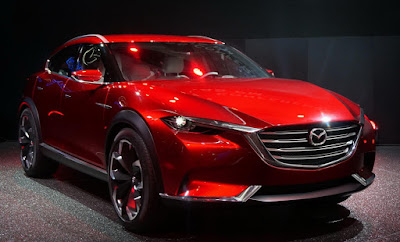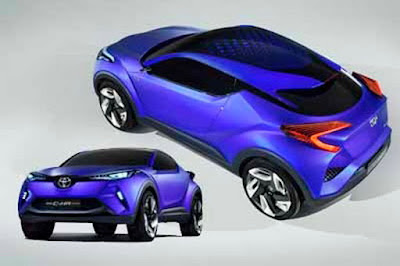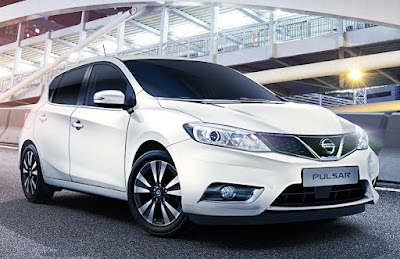The new Mazda Koeru made its world debut at the 2015 Frankfurt Motor Show. Mazda says the Koeru crossover is only a concept. But Mazda’s Frankfurt show car looks remarkably production-ready to our eyes, with no outlandish exterior surfaces and only the merest concept car detailing on the inside.
So to us it now looks more like a future CX-5 Coupe. And in some justification for such a tag, Mazda isn’t shying away from promises of performance. As well as looking pretty, the shape is said to deliver ‘outstanding aerodynamics’ and high-speed stability, while the structure is supposedly ‘ingeniously rigid’.
The Koeru looks so close to production that we’d be surprised not to see the real thing next year – perhaps in 12 months’ time at the 2016 Paris Motor Show. With the CX3 and CX5 selling well, it would hardly be surprising if Mazda is aiming to boost its SUV and crossover offerings. The Nissan Gripz may not be going it alone. Though there’s no official word as to what production model this crossover previews, it looks a lot like a midsize SUV. Or the exact same type of vehicle Mazda didn’t offer since the CX-7 was phased out three years ago.
There’s no word as to what we will find inside the Koeru and official photos have yet to be released, but I expect the crossover to showcase a slightly futuristic cabin with details we might not see in a production Mazda for a few years. However, it should also display a number of features that will make it into the next-generation CX-7 with mild alterations, including the dashboard and the center stack.
Although Mazda says the Koeru employs "the latest SkyActiv technologies," there’s no information as to what motivates the concept. Given the size of the vehicle, 2.5-liter four-cylinder seems like the best choice, but wouldn’t be surprised to see an uprated version of the same unit, as Car and Driver reports that the next CX-7 could get the same turbo-four as the upcoming 2016.
There’s too little info to draw a proper conclusion here, but looking at previous Mazda models, a new production vehicle sporting the brand’s KODO design is excellent news.
So to us it now looks more like a future CX-5 Coupe. And in some justification for such a tag, Mazda isn’t shying away from promises of performance. As well as looking pretty, the shape is said to deliver ‘outstanding aerodynamics’ and high-speed stability, while the structure is supposedly ‘ingeniously rigid’.
The Koeru looks so close to production that we’d be surprised not to see the real thing next year – perhaps in 12 months’ time at the 2016 Paris Motor Show. With the CX3 and CX5 selling well, it would hardly be surprising if Mazda is aiming to boost its SUV and crossover offerings. The Nissan Gripz may not be going it alone. Though there’s no official word as to what production model this crossover previews, it looks a lot like a midsize SUV. Or the exact same type of vehicle Mazda didn’t offer since the CX-7 was phased out three years ago.
There’s no word as to what we will find inside the Koeru and official photos have yet to be released, but I expect the crossover to showcase a slightly futuristic cabin with details we might not see in a production Mazda for a few years. However, it should also display a number of features that will make it into the next-generation CX-7 with mild alterations, including the dashboard and the center stack.
Although Mazda says the Koeru employs "the latest SkyActiv technologies," there’s no information as to what motivates the concept. Given the size of the vehicle, 2.5-liter four-cylinder seems like the best choice, but wouldn’t be surprised to see an uprated version of the same unit, as Car and Driver reports that the next CX-7 could get the same turbo-four as the upcoming 2016.
There’s too little info to draw a proper conclusion here, but looking at previous Mazda models, a new production vehicle sporting the brand’s KODO design is excellent news.

























